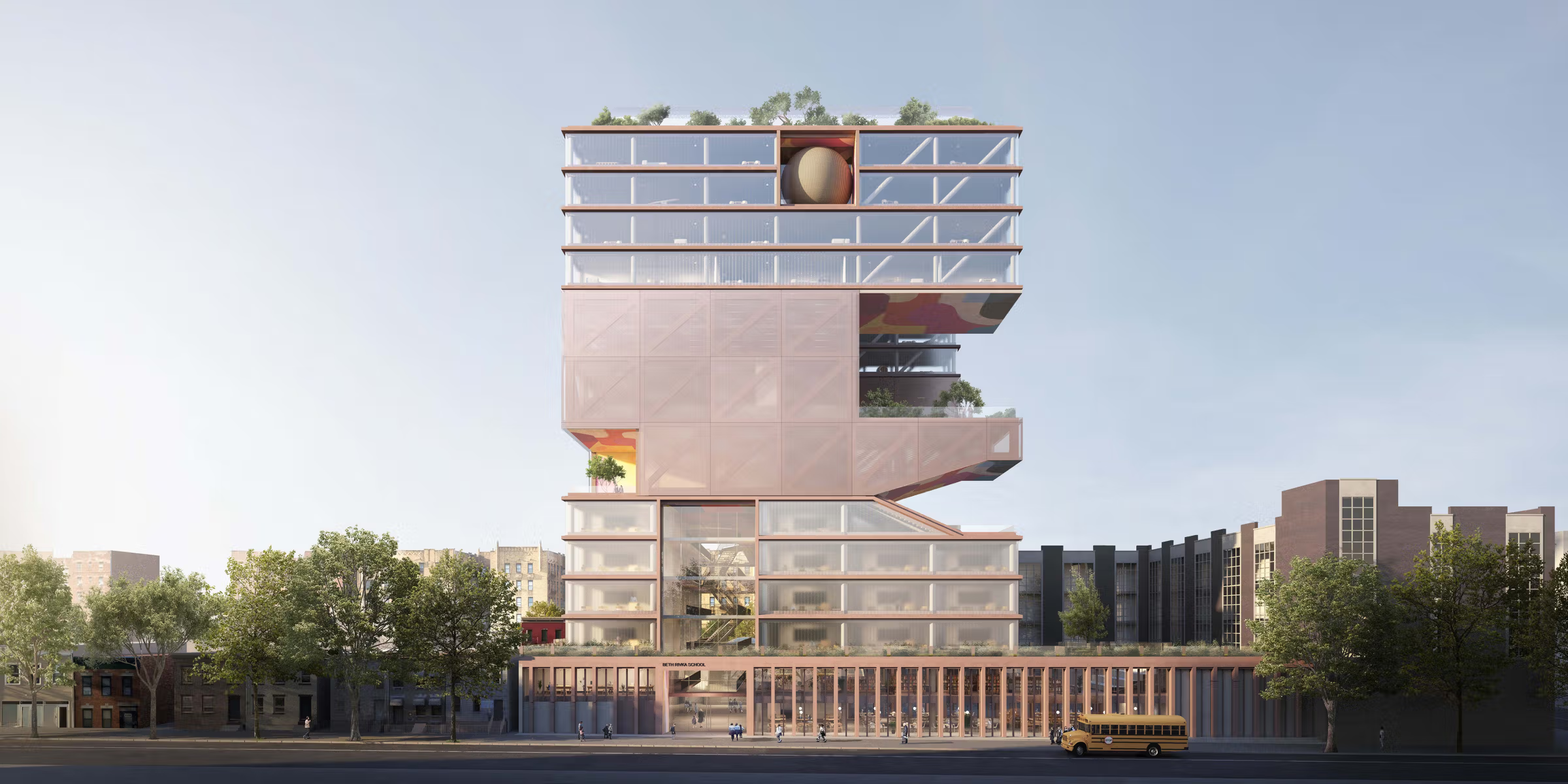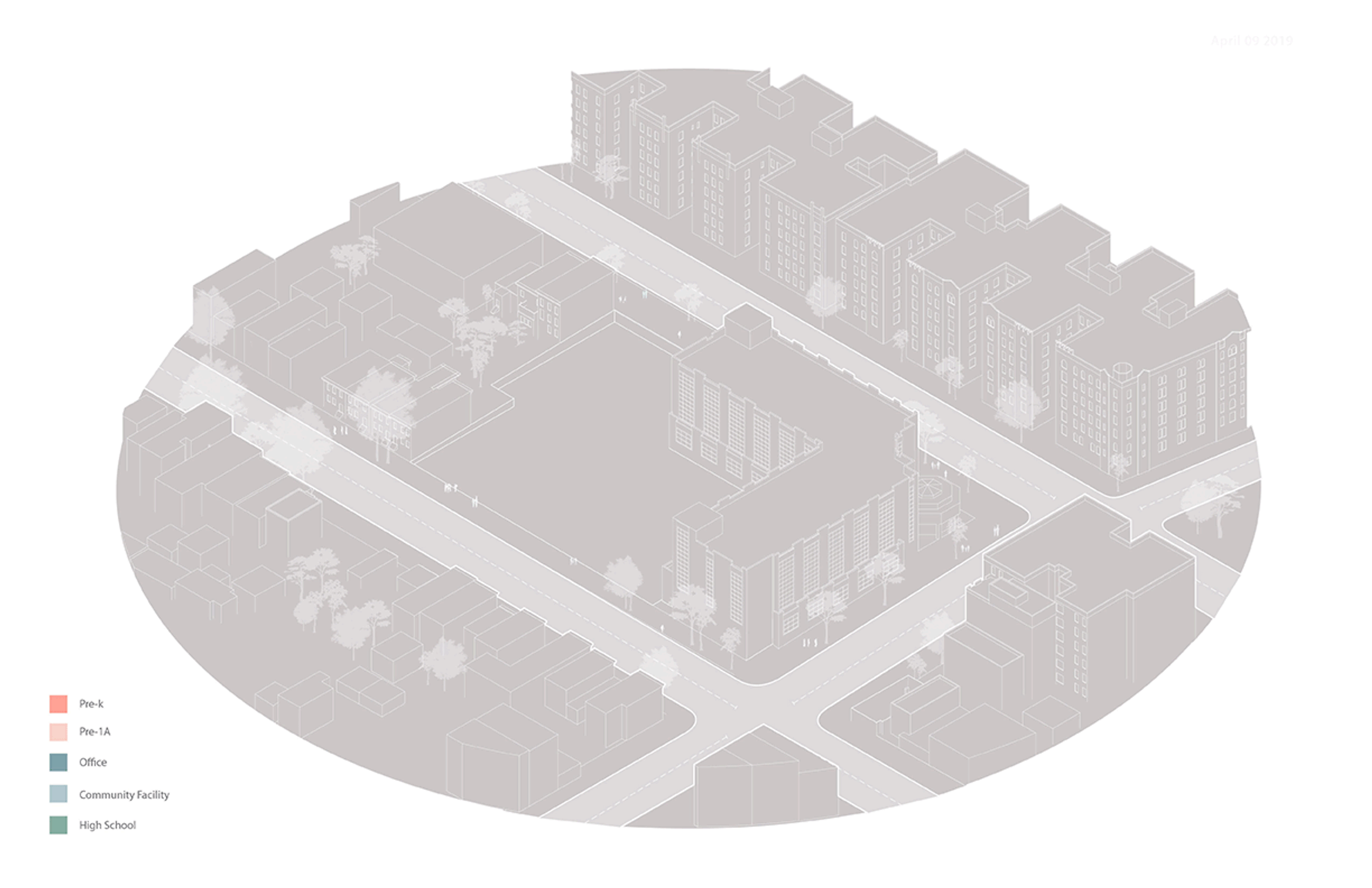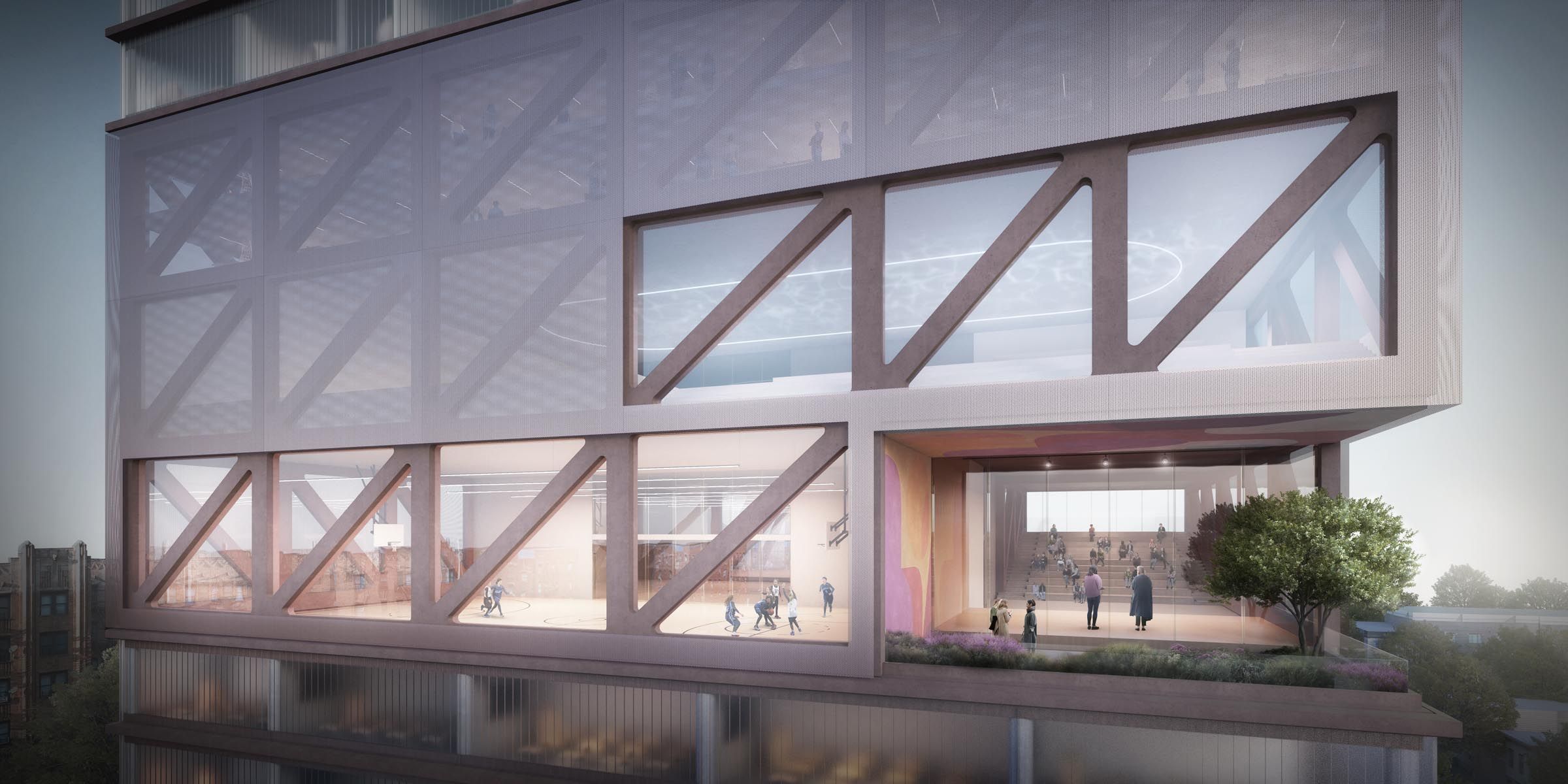
Beth Rivka School
As cities expand and populations grow, considerations such as limited ground space become all the more pressing. Stacked program is the logical solution, but that approach has its challenges: poor circulation, limited outdoor space, dead ends. At ODA, we explore new typologies and understand the complexities of vertical program, proposing dynamic solutions to meet these varied needs.
The conventional American school is low, horizontal, with a playground next to a courtyard. In urban areas, schools tend to grow vertically, and situate their playgrounds on roofs. These typologies can be found in all developed environments, but as we look to a future of increased urban density, the traditional model’s relevance to cities is put into question.
For an addition to an existing girls ‘school in Crown Heights, our design is guided by the principle that the cube is the most compact shape. The 213,000-square-foot project has three components—high school, pre-k, community center—and attaches to the existing four-story, L-shaped elementary school, which will undergo no construction so that it can continue providing services to students. The stacked campus leverages the benefits of a dense footprint while addressing the shortfalls of vertical build: more outdoor space to connect inside and outside worlds, voids shaped and treated as real spaces, gaps taking advantage of orientations, in-between spaces controlled to prevent leftover areas, organized layout to maximize walkability.

To ensure usability, every element stands on its own merits and could functional independently in a traditional horizontal composition. Our design also introduces the sixth facade, found within the voids that are strategically placed throughout the structure. Buildings are no longer limited to the dichotomy of public and private spaces, but can now enjoy this new semi-public gap full of possibilities. In the new school design, these voids allow for a fresh set of faces to apply materials and create openings, resulting in a richer experience.


The high school is accessed through its own entrance, which leads to a bustling atrium connecting lower floors by non-linear stairways. Thirty classrooms, administrative rooms, a large dining hall, library, and labs provide conventional learning spaces, while a video room, art room, and multipurpose areas facilitate more progressive styles of education. A separate building entrance dedicated to the pre-k opens to a gathering hall. This transitional space features an indoor playground for kids, parents, and teachers to meet before or after school. Extra-large elevators lead to the pre-k’s upper floors, where 30 classrooms, a cafeteria, music room, therapy room, and private offices for parent-teacher meetings. The most notable features of the pre-k design are the four spheres of play, where experiential learning happens in an informal setting. Above the pre-k is a rooftop playground. Between the pre-k and the high school sits the shared community facility, equidistant from upper and lower floors and complete with pool, solarium, gym, exercise rooms, auditorium, and two floors of private offices for rent to nonprofit organizations. Together with the existing elementary school and preserved interior courtyard, the three programs create a compact cube of education and activity.


To blend with the existing school’s brown brick, we chose traditional and modern materials of the same tone. Tinted board-formed concrete with a wood texture adds dimension, as do the exposed trusses and expanded metal mesh. Channel glass encases classrooms to provide ample natural light inside while obscuring the view outside (so students don’t become distracted). Murals by local artists adorn ceilings and surfaces with welcomed playfulness.




